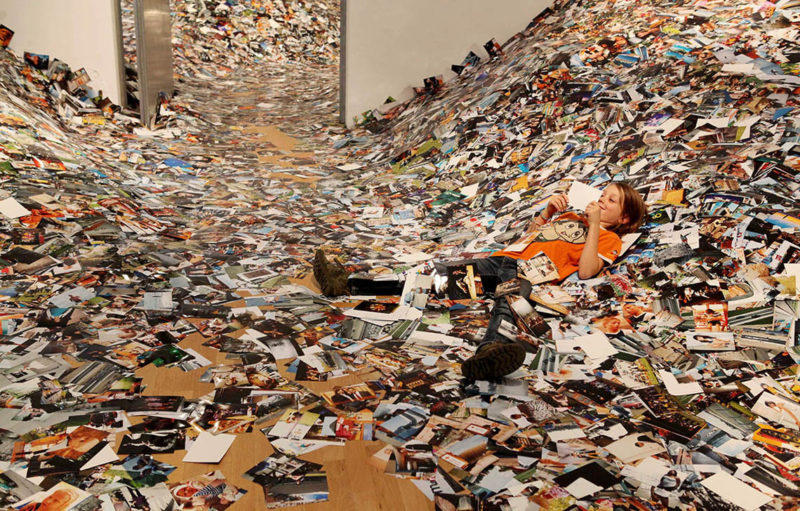Photoland spends about 10% of each year creating, reading, discussing and/or getting upset about “best of” lists. I’ll happily admit I enjoy looking at lists. They are what they are. I’m not sure all lists are really equal – I find it more and more galling to see people’s misfortunes reduced to best-news-photo lists, for example; but it’s fairly simple to ignore what needs to be ignored. And let’s face it, lists are a geeky pleasure. Which is why I still compile the list of my favourite photobooks each year.
The following books are not the best photobooks this year. They’re my favourite books. There’s a difference, and it’s important to me. While I try to review photobooks with the idea of possibly getting closer to their merit, trying to disentangle the inevitable subjective from whatever can be picked up in an objective manner, this following list really is just shamelessly subjective. These are the books I enjoyed the most this year. So far at least. Because, you know, tomorrow I might just ditch a book and decide it’s not worth my time after all, and another book will preoccupy me in ways that might be a tad obsessive.
Needless to say, the following list is not only subjective, it’s also based on the books I have had access to. As it turns out, I only have access to a limited fraction of photobooks produced every year; so some books simply never make it into the list. There also are books that could have made it into the list if – and only if! – I had spent more time with them. Or if I could just admit that I like it more than I want to. On top of that, there are all those books that I simply forgot to add to the list.
Various of these following books made it into the lists I was asked to contribute to magazines or newspapers. There, it might say something like “Top 10” or whatever else magazines and newspapers will use to attract readers. In the British Journal of Photography‘s list, I included Teresa Eng‘s Speaking of Scars, mistakenly thinking I had omitted the book from last year’s book. Turns out I hadn’t. So I’m not going to list it again here.
When people ask(ed) me about my favourite photobook this year, I give Vanessa Winship‘s She Dances on Jackson (reviewed here). It’s quite interesting that this book somehow prevents people from arguing over the choice (in the past, people would usually say something like “Yeah, but have you seen XXX?” or “I quite liked YYY”). This might or might not say something about Jackson. The book certainly isn’t flashy or attention grabbing in any kind of way, but once it has you it won’t release you again.
In completely random order, I enjoyed these following other books this year.
There’s Lydia Goldblatt‘s Still Here, which I still have to review, the perfect antidote to often overly self-indulgent books about family.
Daniel Reuter’s History of the Visit (which I wrote about here) and Dorothee Deiss‘ VisibleInvisible both emerged from the MFA photo program I’m teaching in. I’m perfectly aware of the problem of nepotism (which, let’s face it, is the art world’s elephant in the room), but these books are simply too good not to include them in this list (btw, History has just become available again after its initial print run sold out).
Adam Broomberg and Oliver Chanarin‘s Holy Bible can be found on many people’s lists, deservedly so (reviewed here). I hope it’s not going to spawn a whole industry of people pasting pictures into books, though.
David Moore‘s Pictures from the Real World features photographs taken in the late 1980s (reviewed here). My only complaint about the book is that it really should have more pictures.
Just like Lydia Goldblatt, Amani Willett tackled the issue of family in a way that avoided the usual pitfalls. Disquiet makes the political and the state of the country a large part of the book, mirroring what appears to be a growing feeling that things seem to have gone off the rails a bit (reviewed here).
Sandi Haber Fifield‘s After the Threshold works with groups of images, something I really enjoyed looking at (reviewed here; not all of the groupings succeed, though).
At the occasion of a retrospective in Germany, Harry Callahan was published (reviewed here), the kind of book that re-engages an audience with a photographer’s work smartly. I’m a bit surprised I didn’t see it on more lists this year.
Since I’m a sucker for good portraits, Nelli Palomäki‘s Breathing the Same Air needs to be part of this list (reviewed here).
The 2014 Winter Olympics are almost upon us, and Vladimir Putin is trying to polish his image by releasing political prisoners. If you’re interested in the history of the region, the Sochi Project got what you need (and more). Having spent years in the area, The Secret History of Khava Gaisanova is their crowning achievement (reviewed here), a book that shows what documentary storytelling can really do when it’s done very, very well.
Another catalog, this one even called Katalog, showcases the genius of Hans-Peter Feldmann (reviewed here).
And another one, of sorts, published at the occasion of the Hasselblad Award: Joan Fontcuberta – The Photography of Nature & The Nature of Photography. This one’s also available in electronic form. You probably want to get the real book, but I’ll talk more about that in my forthcoming review.
Willeke Duijvekam‘s Mandy and Eva pushes photobook making a little further (non-electronically), and it works very well. It’s the kind of book where I thought I had it all figured out, and then I didn’t.
Eva Vermandel‘s Splinter had me come back to it over and over again – very few books manage to maintain this kind of pull so well (I wrote about the work here).
Philip-Lorca diCorcia‘s seminal body of work Hustlers got re-released in book or actually tome form. I can spend a lot of time with diCorcia’s work (who, I think, has shaped American photography in ways that still are completely underappreciated). But who came up with the idea of making the book so damn huge?
In contrast, Barbara Probst marries form and function very well (reviewed here). This is probably the book that surprised me the most this year (you just can’t judge books by their covers).
Another very pleasant discovery: Tobias Zielony‘s magnificent Jenny Jenny. The book changed my mind completely about this photographer’s work.
Lastly, Elisabeth Tonnard‘s In This Dark Wood found a commercial publisher after previously existing in self-published form. Another gem, and I hope it will give the artist a bit more exposure.













